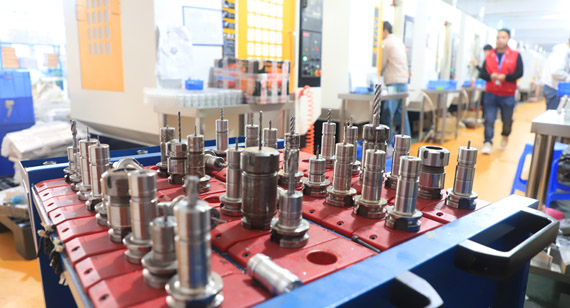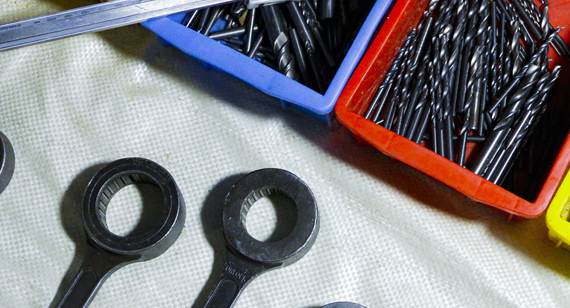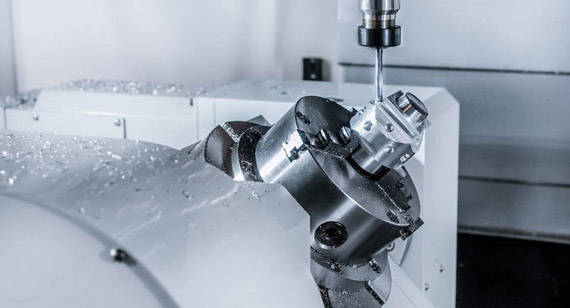15 years one-stop China custom CNC machining parts factory
 1021 |
Published by VMT at Oct 21 2024
1021 |
Published by VMT at Oct 21 2024
In the world of manufacturing, tools are the backbone that supports the production of precision components and products. Tools in manufacturing encompass a wide variety of instruments and machinery designed to assist in the fabrication, assembly, and finishing of items. Whether it’s the cutting tools used in CNC machining or the molds utilized for injection molding, the right tools are critical to ensuring the efficiency, accuracy, and quality of the final product. This article will delve into what tools in manufacturing are, their importance, types, cost considerations, and more, providing a comprehensive understanding for professionals and enthusiasts alike.
Tools in manufacturing can be defined as any implement, device, or machinery utilized in the process of producing goods. These tools range from simple handheld devices to complex machinery, and they play various roles in the manufacturing process.
Types of Tools
Cutting Tools: These are used to remove material from a workpiece to shape it into the desired form. Examples include drills, end mills, and lathes
.
Forming Tools: These tools reshape materials without removing material, often using pressure to create shapes. Examples include dies and hammers.
Molds: Used extensively in processes like injection molding, molds are designed to create specific shapes by shaping molten materials.
Measuring Tools: Accuracy is critical in manufacturing, so tools like calipers, gauges, and micrometers are essential for ensuring dimensions are met.
Assembly Tools: These include tools like screwdrivers and wrenches used in the final assembly of products.
Specialized Tools: Tailored for specific processes, such as jigs and fixtures, which are designed to hold workpieces in place during machining.
Overall, tools in manufacturing are vital for producing a wide array of products, from everyday items to complex machinery.

The significance of tools in manufacturing cannot be overstated. They directly influence the quality of the products, the efficiency of the production process, and the overall profitability of manufacturing operations.
Part Accuracy
One of the primary roles of tools is to ensure that the manufactured parts meet the precise specifications required for their intended application. High-quality tools enable manufacturers to achieve tight tolerances, which is crucial in industries such as aerospace, automotive, and medical devices. When tools are designed and maintained properly, they can produce parts that fit and function as intended, reducing the risk of defects and rework.
Manufacturing Efficiency and Cost-Effectiveness
Efficient manufacturing processes hinge on the right tools. Tools that are suited for the specific materials and production methods can significantly reduce cycle times, leading to faster production rates. This efficiency not only helps in meeting tight deadlines but also lowers labor costs and increases output. Furthermore, cost-effective tools that are durable and require minimal maintenance contribute to overall operational savings.
Customized Parts
In today's competitive manufacturing landscape, customization is key. Tools allow manufacturers to create unique and tailored products that meet specific customer requirements. CNC machining, for instance, enables the production of custom CNC machined parts with intricate designs and features. The ability to adapt tools for different projects is essential for meeting diverse market demands.
Applicable to a Variety of Materials
Tools are designed to work with various materials, including metals, plastics, and composites. The right tools enable manufacturers to explore a broader range of materials, expanding their capabilities and market potential. For instance, specialized cutting tools can be used for machining hard materials, while forming tools can work with softer materials.
The design of manufacturing tools is a complex process that requires consideration of several factors to ensure optimal performance and longevity.
Cycle Time
Cycle time refers to the total time taken to complete one cycle of the manufacturing process. Tool design must consider this metric to ensure that the tools are capable of efficient operations. A well-designed tool can significantly reduce cycle time, which is essential for maintaining production efficiency.
Production Volume and Tool Durability
The expected production volume plays a crucial role in tool design. Tools must be durable enough to withstand the stresses of repeated use over long periods. For high-volume production, tools may be designed with enhanced materials or coatings to extend their lifespan, while low-volume production may use more economical options.
Tool Materials
The choice of material for manufacturing tools is fundamental to their performance. Common materials include high-speed steel (HSS), carbide, and cobalt. Each material has distinct properties that affect cutting performance, durability, and cost.
Frequency of Tooling Changes
Manufacturers must also consider how often tooling changes will be required during production. Tools that can be easily replaced or adjusted can minimize downtime and keep production on schedule.
Part Accuracy and Tolerance
Lastly, the accuracy required for the manufactured parts is a critical consideration in tool design. Tools must be designed to produce parts within specific tolerances to meet industry standards. Precision machining tools are designed to achieve tight tolerances, essential for high-quality production.
Manufacturing tools can be broadly classified into two categories: soft molds and hard tools. Each type serves different purposes and is suited for specific manufacturing processes.
Soft Molds
Soft molds, often made from materials like silicone or urethane, are used primarily in low-volume production and prototyping. They are ideal for creating parts that require rapid iteration and design changes, allowing manufacturers to quickly test and refine designs before committing to high-volume production.
Advantages of Soft Molds
Cost-Effective: Soft molds are generally less expensive to produce than hard molds, making them a practical choice for prototypes.
Fast Production: The simplicity of soft mold production allows for quicker turnaround times.
Flexibility: Soft molds are easily adjustable, allowing for design changes without significant rework.
Hard Tools
Hard tools, typically made from metals or durable composites, are used for high-volume production and provide greater accuracy and longevity. These tools are essential in processes such as injection molding and machining, where durability and precision are paramount.

Advantages of Hard Tools
Durability: Hard tools are designed to withstand the rigors of high-volume production, reducing the need for frequent replacements.
Precision: Hard tools can achieve tighter tolerances and more intricate designs than soft molds.
Versatility: Hard tools can be used across a wide range of materials and processes, making them suitable for various manufacturing applications.
Choose the Right One: Soft Molds or Hard Molds
Choosing between soft molds and hard tools depends on the specific manufacturing needs. For low-volume and prototype production, soft molds offer flexibility and cost savings. In contrast, for high-volume production requiring precision, hard tools are the better option. Manufacturers must evaluate their production goals, budget, and material requirements to make an informed decision.
The cost of tools in manufacturing can vary widely based on several factors. Understanding these costs is essential for budgeting and financial planning.
What Are the Costs Associated with Tools?
Costs associated with tools in manufacturing can be broken down into several categories:
Material Costs: The choice of materials for tool manufacturing significantly impacts costs. High-quality materials may have higher initial costs but can lead to savings through durability and performance.
Manufacturing Costs: The processes involved in creating the tools, including machining, molding, and finishing, contribute to overall costs. Advanced manufacturing techniques may increase initial costs but improve efficiency in the long run.
Design Costs: Tool design requires skilled engineers and designers, adding to the cost. Complex designs may also lead to higher costs due to increased machining time and material usage.
Maintenance Costs: Regular maintenance is necessary to keep tools functioning optimally, contributing to ongoing costs. Proper care can extend tool life and reduce long-term expenses.
Overhead Costs: General business costs, such as labor, utilities, and facility expenses, are also factored into the cost of tools.
Several factors can influence the cost of molds, including:
Size and Complexity: Larger and more intricate molds require more materials and machining time, increasing costs.
Material Selection: Different materials have varying costs, with high-performance materials often commanding higher prices.
Production Volume: Higher production volumes can reduce per-unit costs, making investments in durable tools more justifiable.
Lead Time: Urgent projects may incur additional costs due to expedited production requirements.
The manufacturing process for molds typically involves several stages, each critical to the overall outcome. Understanding these stages can help manufacturers manage costs and timelines effectively.

Prototype Tools
Prototype tools are often the first stage in the tool development process. These tools allow manufacturers to test designs and functionality before committing to full-scale production.
Rapid Prototyping: Techniques such as 3D printing or soft molds are commonly used to create prototypes quickly.
Testing: Prototypes are evaluated for performance, helping identify any necessary design adjustments.
Bridge Tools
Bridge tools serve as a transitional solution between prototypes and full production tools. They are typically used for short-run production and allow manufacturers to test market viability without the full investment in production tooling.
Cost-Effective: Bridge tools are less expensive than full production tools but provide greater accuracy than prototypes.
Flexibility: These tools allow for design modifications based on initial production feedback.
Production Tools
Production tools are the final stage in the tooling process and are designed for high-volume manufacturing. They are built to last and produce parts with tight tolerances and high-quality finishes.
Investment: Production tools require a higher upfront investment but yield significant savings in the long term through efficiency and durability.
Long-Term Performance: These tools are designed for longevity and consistency, making them the backbone of large-scale manufacturing operations.
The manufacturing of tools involves several key processes:
Design and Engineering: Initial designs are created based on specifications and requirements.
Material Selection: Choosing the appropriate materials for durability and performance.
Machining and Fabrication: The actual manufacturing process, which may include CNC machining, molding, and finishing.
Assembly: For tools that require multiple components, assembly is necessary to ensure functionality.
Testing and Quality Control: Final inspection and testing ensure that the tools meet design specifications and quality standards.
The choice of metal materials is crucial for the performance and longevity of production tools. Common materials include:
High-Speed Steel (HSS): Known for its toughness and wear resistance, HSS is commonly used for cutting tools and can withstand high temperatures.
Carbide: This material is exceptionally hard and durable, making it ideal for cutting tools that require high precision and wear resistance.
Cobalt: Cobalt-based alloys are often used for tools that must maintain hardness at high temperatures.
Stainless Steel: Resistant to corrosion, stainless steel is used in tools that require durability in harsh environments.
The selection of metal materials should align with the specific requirements of the manufacturing process and the materials being worked on.
Effective use of machining tools involves understanding several factors that can impact performance and efficiency.
Part Geometry
The geometry of the part being machined can affect the choice of tools and cutting parameters. Complex shapes may require specialized tooling to achieve the desired results.
Tool Life
Monitoring tool life is essential for maintaining productivity. Regular inspection and maintenance can help identify wear and damage, ensuring that tools are replaced before they fail.
Material Selection
Choosing the right material for both the tool and the workpiece is crucial. Tools must be compatible with the materials being machined to achieve optimal performance and minimize wear.
Several factors can influence the cost of tools in manufacturing, and understanding these can aid in budgeting and decision-making.
Part Specifications
Complex parts with intricate designs may require specialized tooling, increasing costs. Manufacturers must evaluate the specifications carefully to determine the best tooling solutions.
Applications
Different applications may require different types of tools, impacting overall costs. High-performance tools may be necessary for specific industries, adding to the expense.
Tool Quality
Investing in high-quality tools can lead to long-term savings through improved performance, reduced downtime, and lower maintenance costs.
VMT offers rapid tool manufacturing solutions that cater to diverse industry needs. By leveraging advanced technologies and materials, VMT provides efficient tooling solutions that minimize lead times and enhance productivity. Our CNC machining services ensure high-quality results, making us a reliable partner for all your manufacturing needs.

In conclusion, tools in manufacturing are fundamental to the production of high-quality products. From cutting tools to molds, understanding the various types, their importance, costs, and design considerations is vital for manufacturers aiming to optimize their operations. Investing in the right tools not only enhances production efficiency but also ensures that the final products meet the necessary quality standards. With careful planning and consideration, manufacturers can leverage the power of tools to drive innovation and success in their operations.
What is the Difference Between Tooling and Machining?
Tooling refers to the creation and use of tools for manufacturing, while machining is the process of removing material from a workpiece using tools.
What are the Basic Characteristics of Tools?
Tools should be durable, precise, and suitable for the materials being worked on, with the ability to achieve tight tolerances.
What is Rapid Tool Manufacturing?
Rapid tool manufacturing involves quickly creating tools, often using techniques like 3D printing, to allow for fast prototyping and production.
How Much Does it Cost to Make Tools?
Tool costs vary based on material, complexity, and production volume. Understanding the factors involved can help estimate overall expenses.
What are the Four Basic Types of Tools?
The four basic types of tools include cutting tools, forming tools, molds, and measuring tools.
What is the Cost of Tools in Manufacturing?
The cost of tools in manufacturing encompasses material, manufacturing, design, maintenance, and overhead costs.
What is the Difference Between Machinery and Tools?
Machinery refers to larger mechanical systems used for production, while tools are smaller devices used to shape or assemble materials.
What is Machining and Tooling?
Machining is the process of removing material from a workpiece, while tooling refers to the tools used in this process, including their design and manufacture.
